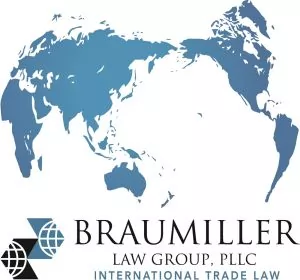The year 2022 saw a substantial increase in export restrictions applicable to China. The U.S. and China are not only in a trade war but there is also an effort by the U.S. to (1) prevent development of supercomputers, semiconductors and related products and technologies, and (2) prevent use of forced labor – especially involving the Uyghur minority in the Xinjiang region. U.S. companies planning to export to China are facing a new or revised set of restrictions that may make their business more challenging. Life is also more difficult for companies planning to import from China.
New Export Controls Focused on China.
The big news for exports to China is the imposition of new export controls on semiconductors and related products. At the end of 2022, the Bureau of Industry & Security (BIS) of the Department of Commerce published a set of new and revised controls. The notice in the Federal Register gave the industry 30 days to submit comments on the new export classifications and controls, which was extended until January 31, 2023. That time period has expired, and the rules are now in effect.
The stated purpose of the new controls was explained as "the restrictions implemented in this rule follow extensive United States government consideration of the impact of advanced computing ICs, ''supercomputers,'' and semiconductor manufacturing equipment on enabling military modernization, including the development of weapons of mass destruction (WMD), and human rights abuses."
The notice announced the creation of four new Export Commodity Control Numbers (ECCNs): 3A090 for certain semiconductors and 4A090 for certain computers incorporating semiconductors that meet or exceed the capabilities of those described in 3A090. The other two ECCNs are 3B090 for equipment used to produce semiconductors described in 3A090 and 4D090 for software used with computers described in 4A090. ECCNs 3A090 and 4A090 are not simple to read and apply; they are written in highly technical terms. One of the challenges imposed by these new controls will be reading and understanding the descriptions associated with these ECCNs and determining whether a proposed export falls within their terms. Finally, the new ECCNs are subject to Regional Stability (RS) controls for export from the US. Exports to China under these and other semiconductor and computer ECCNs will be subject to RS controls and an export license requirement – and probably a license denial.
Expansion of Direct Product Rules.
Per 734.9 of the EAR: "Foreign-produced items located outside the United States are subject to the EAR when they are a "direct product" of specified "technology" or "software," or are produced by a plant or 'major component' of a plant that itself is a "direct product" of specified "technology" or "software." If a foreign-produced item is subject to the EAR, then you should separately determine the license requirements that apply to that foreign-produced item."
This means that an article that is produced outside the U.S. with U.S. technology or software or is produced in a factory that is the direct product of U.S. technology or software, the article may be subject to the same U.S. export controls as if it were exported from the U.S. As an example, a semiconductor device is produced in a factory in Malaysia. The device was made with U.S. origin technology. If the device is exported from Malaysia to China, it will be subject to U.S. export controls if it is the direct product of that technology. The device will especially be subject to U.S. controls (and likely license denial) if it is used in "supercomputers" or is classified under ECCNs 3A090 or 4A090 or is destined for a company on the Entity List.
The Foreign Direct Product Rule has previously been in existence. What is new is increased attention and enforcement if the direct products are exported to China.
Tightened Rules for the Unverified List.
Beyond these new controls, the U.S. expanded the restrictions associated with the Unverified List (UVL). This list applies to many companies throughout the world – but especially those in China. The UVL is described in Part 744.15 of the Export Administration Regulations (EAR). A U.S. company cannot export to a Chinese company on the UVL without first obtaining a UVL Statement signed by the Chinese company that – among other things – it agrees to a U.S. Government end use verification visit. Getting such a statement will be close to impossible.
A company may be placed on the UVL when the U.S. Government wants to perform a post license verification but the request to do so is denied. After 60 days from the request, the company is placed on the UVL. Under the revised regulation, if another 60 days go by and the foreign government still does not agree to a verification, the company is moved to the Entity List. China does not typically agree to verifications and many Chinese companies will be placed on the UVL and 60 days later will be on the Entity List.
Additions to the Entity List.
The Entity List – described in Part 744.16 of the EAR – applies to companies "reasonably believed to be involved, or to pose a significant risk of being or becoming involved, in activities contrary to the national security or foreign policy interests of the United States." Placement on the Entity List only involves a finding to this effect – no proposed rule in the Federal Register and public comment is required.
There are companies from all over the world on the Entity List – but by far the greatest number are in China. The above referenced Federal Register notice added more. In most cases, a U.S. company cannot export to a company on the Entity List without first obtaining an export license. For most Chinese companies on the list, there is a presumption of license denial – regardless of how the product is classified on the Commerce Control List. In effect, exports to Chinese companies on the Entity List are not allowed. Exporters must thoroughly check who the end user will be for their products to ensure none appear on the Entity List.
New End Use Controls for ''Development'' or ''Production,'' of Integrated Circuits at Certain Semiconductor Manufacturing'' Facilities'' Located in China.
A U.S. party may not export, re-export, or transfer (in-country) an item that can be used for development or production of integrated circuits at facilities located in China. This rule is pretty broad as it not only applies to exports to China and in-country transfers in China, but also re-exports from third countries to China. Thus, an export of semiconductor technology or devices from the U.S. to Japan would fall under this end use control if they were in turn exported from Japan to China. U.S. exporters are expected to use due diligence to know how their technology or items are to be used and the end users of the technology or items and apply for appropriate licenses to authorize such transactions.
U.S. Person Support of Certain End Uses in China.
Part 744.6 of the EAR was expanded to apply new controls on the activities of U.S. persons to support the production of integrated circuits used in Weapons of Mass Destruction (WMD) and military-intelligence-related end uses and end users. "U.S. person" has a broad definition and can be an individual or a company. "Support" in this context includes shipping, transmitting, or transferring (in-country) items not subject to the EAR; facilitating such shipment, transmission, or transfer (in country); or servicing such items not subject to the EAR. Note the expanded regulation speaks of items "not subject to the EAR" – meaning not controlled under the U.S. regulations. What is controlled here is the support activity – not necessarily the items shipped or serviced.
We have yet to understand the extent of activities that BIS will consider a "facilitation" of a restricted activity. In an Information Systems Technical Advisory Committee presentation on November 2, 2022, the Department of Commerce's Assistant Secretary Thea D. Rozman Kendler indicated that knowledge of a violation is required for the agency to conclude the U.S. person was "facilitating" a restricted transaction. However, administrative or clerical activities, such as arranging for shipment or preparing financial records, are not considered "facilitating."
The expanded regulation also applies to shipping, transmitting, or transferring (in-country) or facilitating the shipment, transmission, transfer (in-country) to or within China, or servicing of articles not subject to the EAR (meaning made in China or other countries) meeting the parameters of ECCN 3B090, 3D001 (for 3B090), or 3E001 (for 3B090) regardless of end use or end user. Accordingly, facilitating the shipment of a machine made in South Korea and used to make semiconductors and classified under 3B090 if it were made in the U.S. would require a license. It is the activity of the U.S. persons and not the item being transferred, shipped, or serviced that is subject to license (and likely denial).
Things Also Got More Difficult for Importers from China
Many companies that export to China also receive imports from China. This is another area where there has been a continuation of special duties on many products of China and also new restrictions on Chinese products made with use of forced labor.
The Trump administration imposed a series of special duties on many products of China under Section 301 of the Trade Act of 1974. The affected products are identified by their classification in the Harmonized Tariff Schedule of the United States (HTSUS), and vary from 7.5% to 25% in additional duties, imposed on top of normal Customs duties and Antidumping and Countervailing duties which affect many products of China.
It was thought (or hoped) that the special duties would be reduced or rescinded under the Biden administration. By and large, this has not happened. The U.S. Trade Representative has extended certain COVID related exclusions and is now undertaking a "review of necessity" of the Section 301 tariffs while seeking public comments to explain why and how the tariffs have created an economic hardship. There is also a challenge in the courts to some of the Section 301 tariffs on the ground they were improperly imposed (i.e., lists 3 and 4). Until all of this is resolved, importers will continue to pay the additional duties.
The major new development has to do with products originating in the Xinjiang Uyghur Autonomous Region of China. China is accused of using forced labor to produce articles from that region. Articles made with use of forced or child labor are prohibited in the U.S. and any violating shipments are subject to detention, exclusion or seizure.
The Uyghur Forced Labor Prevention Act which became law on Dec. 23, 2021, requires Customs to presume that articles made in whole or part in the Xinjiang region or by companies on the Uyghur Entity List (a much different list from the EAR Entity List) were made with forced labor and are therefore prohibited. This means that many shipments originating in China – not just Xinjiang – are now under suspicion and potentially subject to detention, seizure, or exclusion. Importers are expected to use due diligence to determine if any of their imports from China originate in Xinjiang or have any content originating in Xinjiang. U.S. Customs has the authority to detain and analyze shipments from China to determine whether they have Xinjiang or forced labor content. If they do, the shipments will ultimately be excluded or seized and forfeited – meaning the importer will not see them again.
But the rules go beyond that. Shipments originating in Xinjiang and shipped through third countries are subject to the same rules. Even more – a product made in a third country but having Xinjiang content is also prohibited. For example, a cotton garment made in Vietnam but containing cotton fiber grown in Xinjiang would fall within the scope of the Uyghur Forced Labor Prevention Act and be subject to detention. Prudent importers must carefully examine the entire supply chain of the products to ensure they do not contain any Xinjiang or forced labor content – or face the consequences.
Are you a U.S. company doing business in China? Exporting to China or sourcing products in China? The rules are steadily getting stricter. Better use extreme caution.
Check out our new Digital Magazine Get the inside scoop on the Braumiller Law Group & Braumiller Consulting Group "peeps." Expertise in International Trade Compliance.
The content of this article is intended to provide a general guide to the subject matter. Specialist advice should be sought about your specific circumstances.



